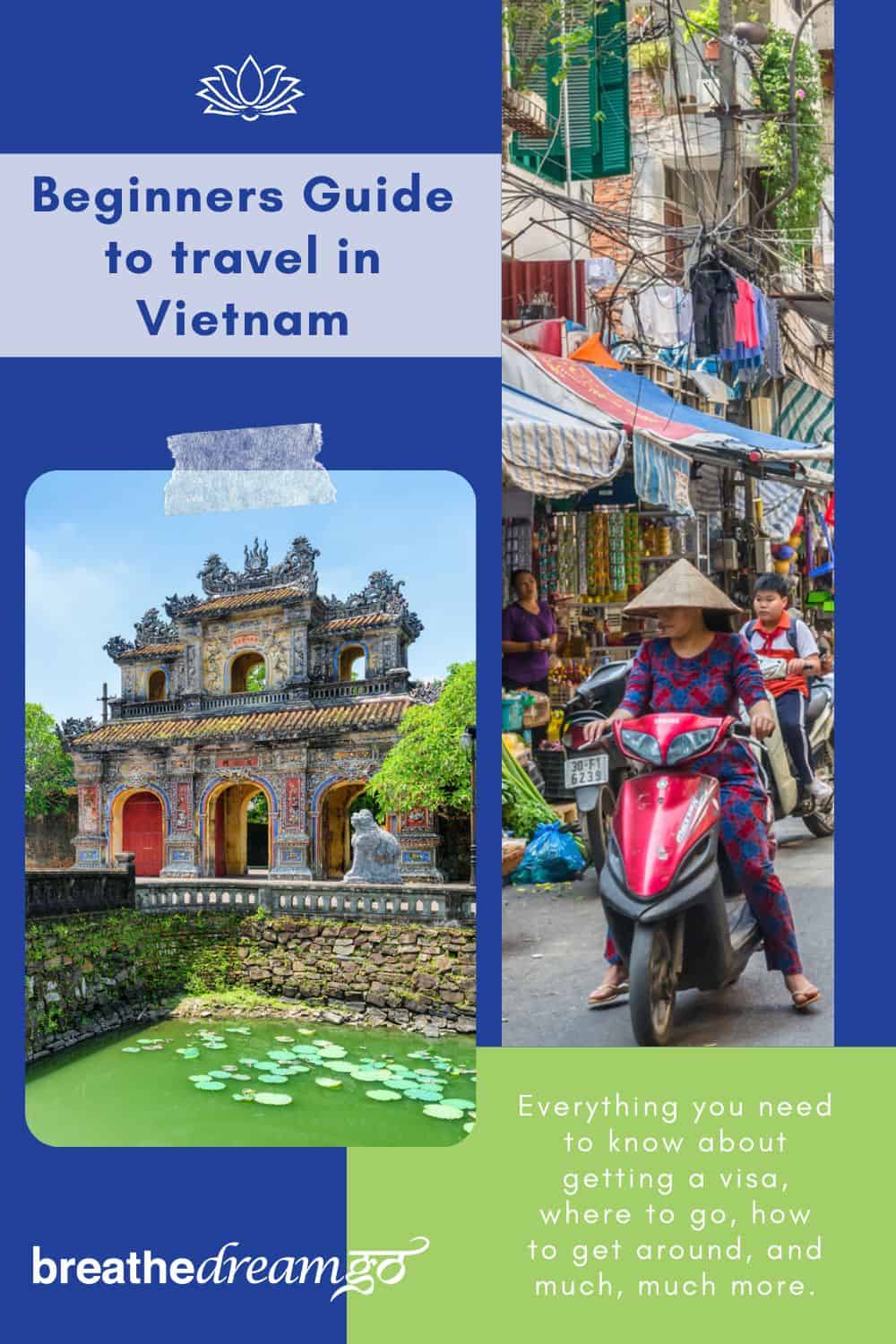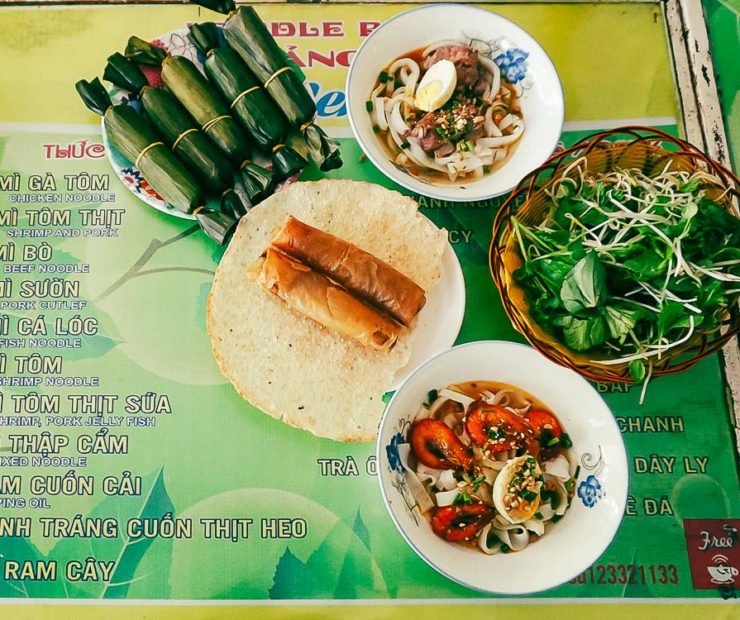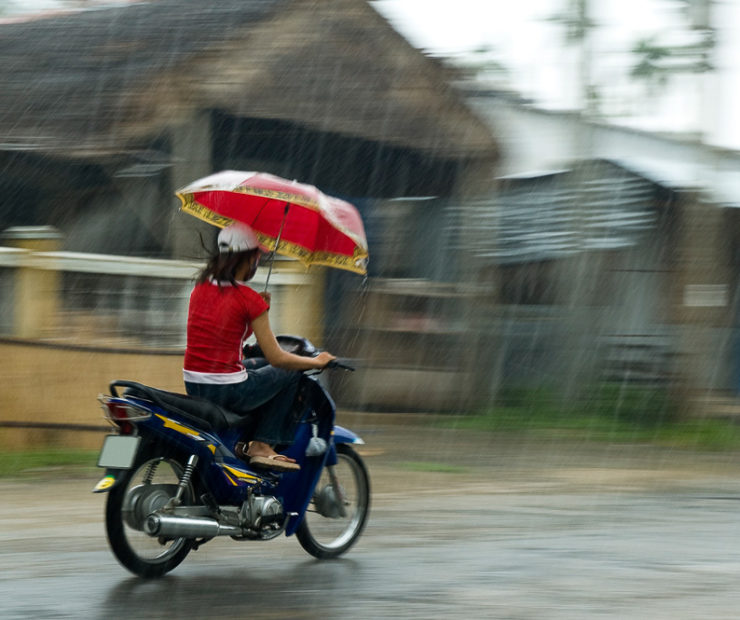Table of Contents
Beginners Guide to Vietnam for First-Time Travellers
Vietnam is on many travel lists these days. It is becoming one of the most popular countries to visit in Asia as it is developed enough to be comfortable for tourists, but still retains its authentic culture. The Beginners Guide to Vietnam for first-time travellers will cover everything you need to know – from getting a visa to where to go, and from learning about safety, scams and money to food, language, and culture. This guest post is by Dustin Kemp, a long-time resident of Vietnam who is sharing his best tips, advice, and recommendations for visiting Vietnam.
I’ve been living happily in Vietnam for a decade and have seen many tourists fall in love with the country during their time here. Unfortunately, I’ve also seen that a lot of first-time visitors, especially those who are not experienced travelers, have trouble navigating the country. They are often intimidated by the language barrier and the cultural differences, and it prevents them from fully enjoying the country’s beauty despite its great tourist infrastructure.
In this guide, I’ll go through every aspect of traveling in Vietnam that beginners need to know, from getting a visa to making your way around the country to avoiding scams. Of course, I’ll also convey a bit of why I love Vietnam so much and why you will too.
Guest writer Dustin Kemp is a culture aficionado who fell in love with Vietnam 10 years ago and has been living there and writing about Southeast Asia ever since.
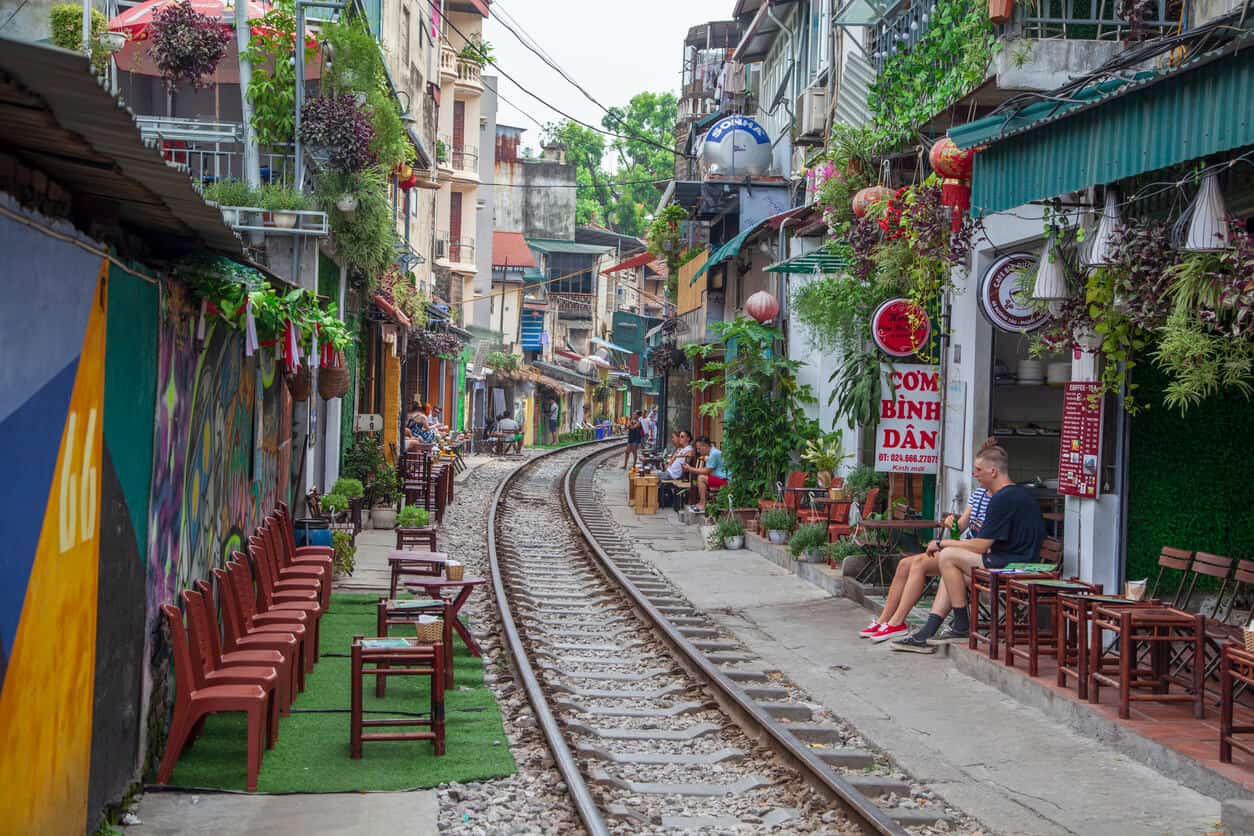
What makes Vietnam a unique travel destination for cultural experiences?
Vietnam is one of the most exciting and underrated travel destinations on earth. The population of 100 million people including 52 officially-recognized minority tribes makes the country very culturally diverse.
Adding to the ethnic diversity is Vietnam’s history of interaction with other cultures. The Chinese, the Japanese, the French, and the Americans all occupied Vietnam at one time, and their influences flavored the traditional culture to create utterly unique foods, customs, and experiences.
The diverse nation has three distinct regions: the misty and mountainous Northern Vietnam, the rustic and unexplored Central Vietnam, and the tropical and sunny Southern Vietnam. All three regions have their own variation on the intoxicating cultural cocktail of the country. If you’re anything like me (and I’d guess you are if you’re reading this blog), the result will likely be a collection of unique memories and rich cultural experiences you’ll carry with you forever.
Getting Your Vietnam Visa
The very first thing you’ll need to consider is getting your Vietnam visa. Luckily, it’s a fairly straightforward process. As long as you can follow directions to a T, you don’t need to deal with visa agents, embassies, or any other third parties to get your Vietnam visa. Instead, just start up your internet browser and follow these steps:
- Go to Vietnam’s evisa application platform. There are lots of visa scam sites that either charge inflated prices for visas or just steal your money, so be sure to use this link.
- Continue to the application form, where you’ll need to upload a passport picture and a scan of your passport page in addition to filling in personal information. The most important info is your full name, passport number, entry and exit dates, and other dates printed on your passport. If any of it is entered incorrectly, you’ll have to reapply for the visa. NOTE: If you have a middle name, it needs to be entered in the “given name” field. For example, John Henry Doe would enter “Doe” as his surname and “John Henry” as his given name.
- On the next page, double- and triple-check the information you entered to make sure it’s correct.
- On the final page of the immigration portal, select your credit card type and enter in your card info. Agree to the payment terms and the page will process your payment. You sometimes need to click the “pay now” button twice – the page will display a “processing” animation to let you know when it’s working on the payment.
- Immediately after the payment is made, you’ll receive an email to the address you entered on the application. The email will include, among other things, a confirmation code and a link to the Vietnam visa database page.
- After 3–5 business days, go to the Vietnam visa database linked in the email and enter the confirmation code you got in your email along with your birth date and email to look up the status of your e-visa. If you entered everything correctly, the visa should have been processed successfully and you can download the file. Just to be safe, make sure all the info on the issued visa is correct.
- Print your e-visa and have a copy handy to present to both the check-in attendant at your departure airport and the immigration officer at the Vietnam airport.
Note that there are a few countries with Vietnam visa exemptions. Most visitors, though, including ones from India, Canada, and the USA, need to apply for an e-visa following the steps above.
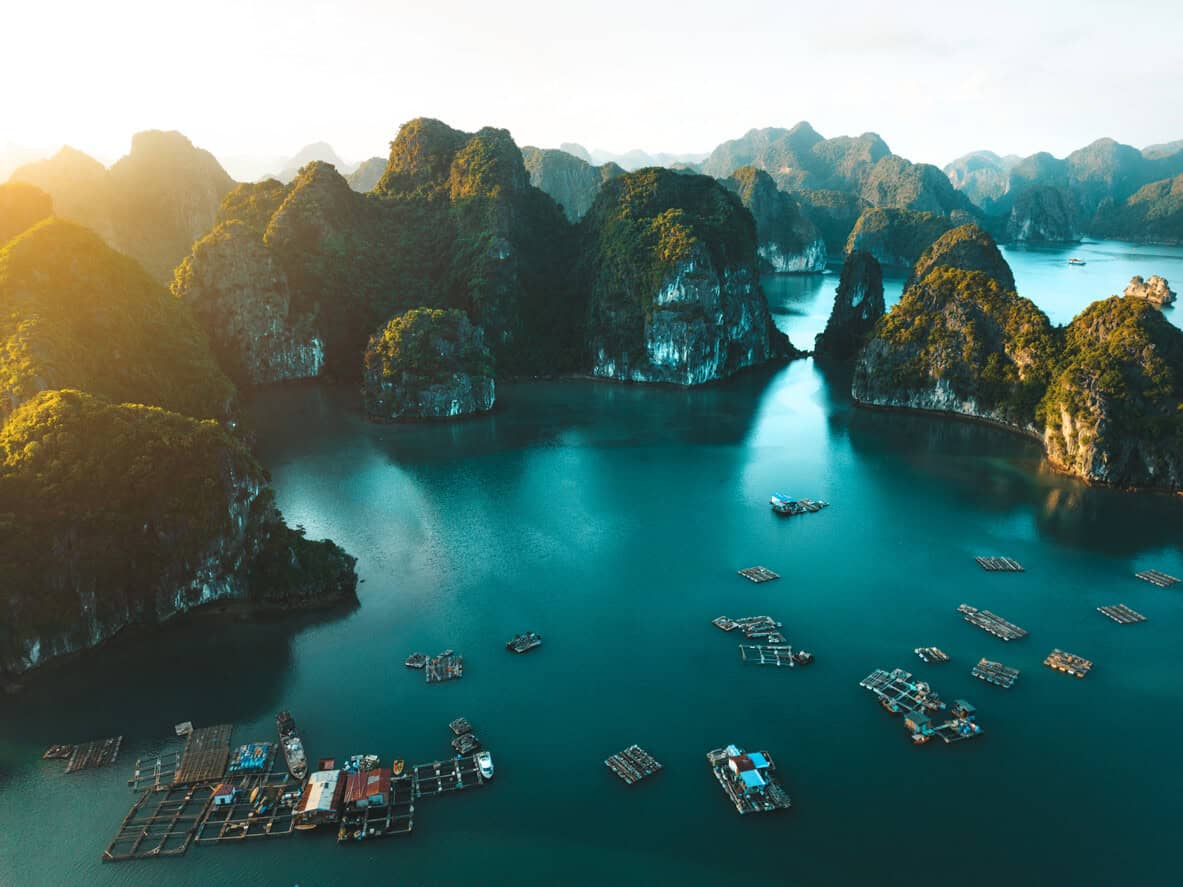
Flying into Vietnam
Vietnam has two major international airports: Noi Bai Airport in Hanoi and Tan Son Nhat Airport in Ho Chi Minh City. Fly into Hanoi if you’re starting your journey in the north of the country and fly into HCMC if you’re beginning in southern Vietnam. You can take a domestic flight directly from either of these airports to another big city in Vietnam if you want to begin your trip elsewhere.
Vietnam also has several other airports that are technically international, like those in Da Nang, Nha Trang, and Phu Quoc. However, they generally only offer more expensive flights to and from a small selection of nearby foreign countries like China and South Korea.
Getting Around Vietnam
This is one of my favourite parts about traveling in Vietnam: it’s so easy to get around, whether you’re traveling a few kilometres or from one city to another.
In the city
My two recommendations for traveling within the cities in Vietnam are Grab and public bus.
When traveling in the city, the app “Grab” is your best friend. It’s essentially the Southeast Asian equivalent of Uber. Like Uber, you enter your destination and it detects your current location via GPS. It then tells you the price for a car or a cheaper motorbike taxi to the destination.
The motorbike taxi option can only accommodate 1 passenger and no luggage, but I’d recommend trying it out if you are riding solo. Feeling the wind whip through your hair as you cruise the city is lots of fun, and Grab bikes are actually very safe.
Grab cars or bikes are usually cheaper than taxis and are a good way to avoid taxi scams, which are extremely common (more on that in the “avoiding scams” section later on).
For a more adventurous and immersive cultural experience, public buses in Vietnam are great too. Google Maps provides accurate bus routes to get to any location you enter. Vietnamese buses don’t generally abide by their scheduled arrival times, but the routes usually run every few minutes so it’s not an issue.
When your bus gets to your stop, step on and pay the fare, which is always less than 10,000 Vietnamese dong (VND). Your fellow riders will often be a diverse sampling of Vietnamese city life, from young students with backpacks and books to old ladies carrying home their street food yokes after a day of selling. The experience won’t be as comfortable or convenient as Grab, but some of my most culturally rich memories of urban Vietnam were formed on public buses.
In between cities
The four best options for traveling between cities are plane, bus, train, and private car.
Domestic flights in between cities are obviously the fastest option, but also the most expensive. The best part, though, is that domestic air travel in Vietnam is hassle-free, much like it was in the USA before TSA existed. I’d recommend Vietnam Airlines for domestic travel if cost isn’t an issue and Vietjet for budget flights.
The cross-country bus system in Vietnam is incredible. Tickets are a fraction of the price of planes and most people can fully recline in the sleeper seats provided. The highways the buses take are pretty smooth, too, so you’ll likely be able to sleep for most of the ride. The journey will of course take longer than a plane, but you can just buy a ticket on a night bus and save money on a hotel for the night. 12Go is my favorite site for finding inter-city bus tickets in Vietnam.
I love Vietnam’s national railway system, too. It has only one line: the North-South railroad, which runs through almost every city you might want to visit. Riding the train takes almost the same amount of time as driving across Vietnam, but the landscapes that fly by the window are some of the most beautiful you’re likely to encounter in the country. 12Go is also great for Vietnam train tickets, as is the official site of Vietnam Railways.
Private car is the most convenient way to get from city to city in Vietnam and it may also be cost-efficient if you’re traveling in a large group. The best option for finding a private car is generally the Grab ride-hailing app mentioned above.
You can also take a cruise. Read about taking a Mekong River Cruise here from Perceptive Travel.
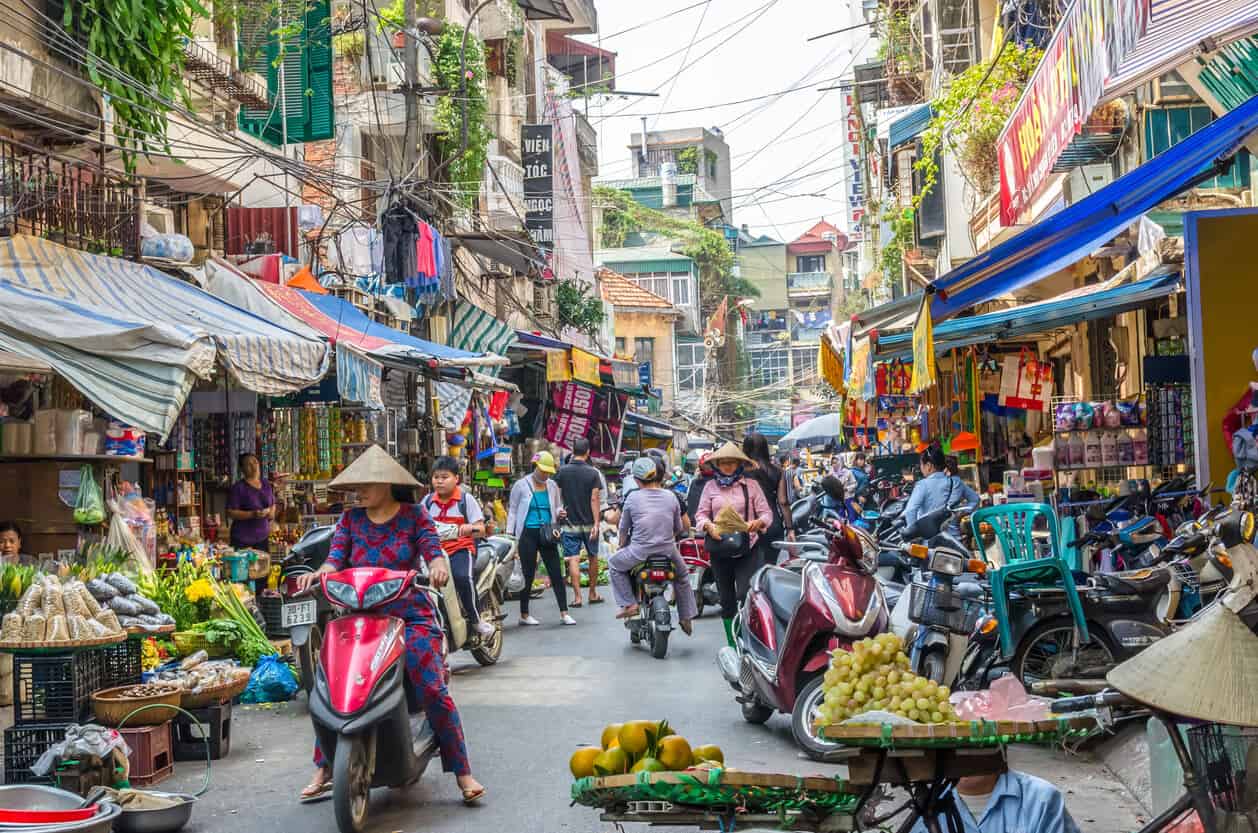
Dealing With Money In Vietnam
Vietnam’s currency is the Vietnamese Dong, abbreviated as VND. It’s gone through a lot of inflation over the last 50 years and is now used only in denominations divisible by 1000. The different denominations of VND bill, the colour of the bill, and each bill’s approximate value in USD are:
| Bill Denomination | Bill Colour | Bill Value (USD) |
| 1K | Paper White | 0.04 |
| 2K | Paper White | 0.08 |
| 5K | White and Blue | 0.20 |
| 10K | Yellow , Red, Green | 0.40 |
| 20K | Blue | 0.80 |
| 50K | Pale Red | 2 |
| 100K | Green | 4 |
| 200K | Golden, Blue, Red | 8 |
| 500K | Teal | 20 |
Vietnam is a largely cash-based economy. Credit cards are still only accepted in a few businesses like hotels, nice restaurants, and convenience stores, and most vendors will only accept cash. Because of that, you will need to get hold of local currency either by withdrawing at an ATM or by exchanging your local currency.
Vietnamese cities have ATMS on almost every street, and even rural towns will probably have a few scattered about. However, you should avoid using ATMs at locations not attached to a bank so as to avoid the ATM card-skimming scam.
Most Vietnamese ATMs accept any Visa or Mastercard. Unfortunately, many banks that issue them charge large fees for withdrawing from a foreign ATM. If you are lucky enough to have a card that does not charge withdrawal fees, like a card at Charles Schwab Bank in the US or the Niyo Global Card in India, it’s a fantastic option.
You can also apply for a Wise ATM Card before you leave home and top it up with your local currency. You can then switch to VND once you’re in Vietnam to use it like a Vietnamese ATM card. You can even switch back to your home currency after your trip, which lets you spend all of your leftover money on the card. This is my favourite method for using ATMs abroad.
You’ll get the best exchange rates if you exchange cash for VND before you leave home. If you are already in Vietnam and need to exchange cash, though, use Google Maps to locate the best-rated money exchange location in your area. Make sure the shop you choose has a good number of ratings (at least 50) and not just a high rating based on a few reviews.
I’d recommend the equivalent of 65 USD per day per person as a good amount to exchange. This fee should cover hotels, food, transport and activities for a mid-range traveler. Of course, you might spend more or less depending on your tastes.
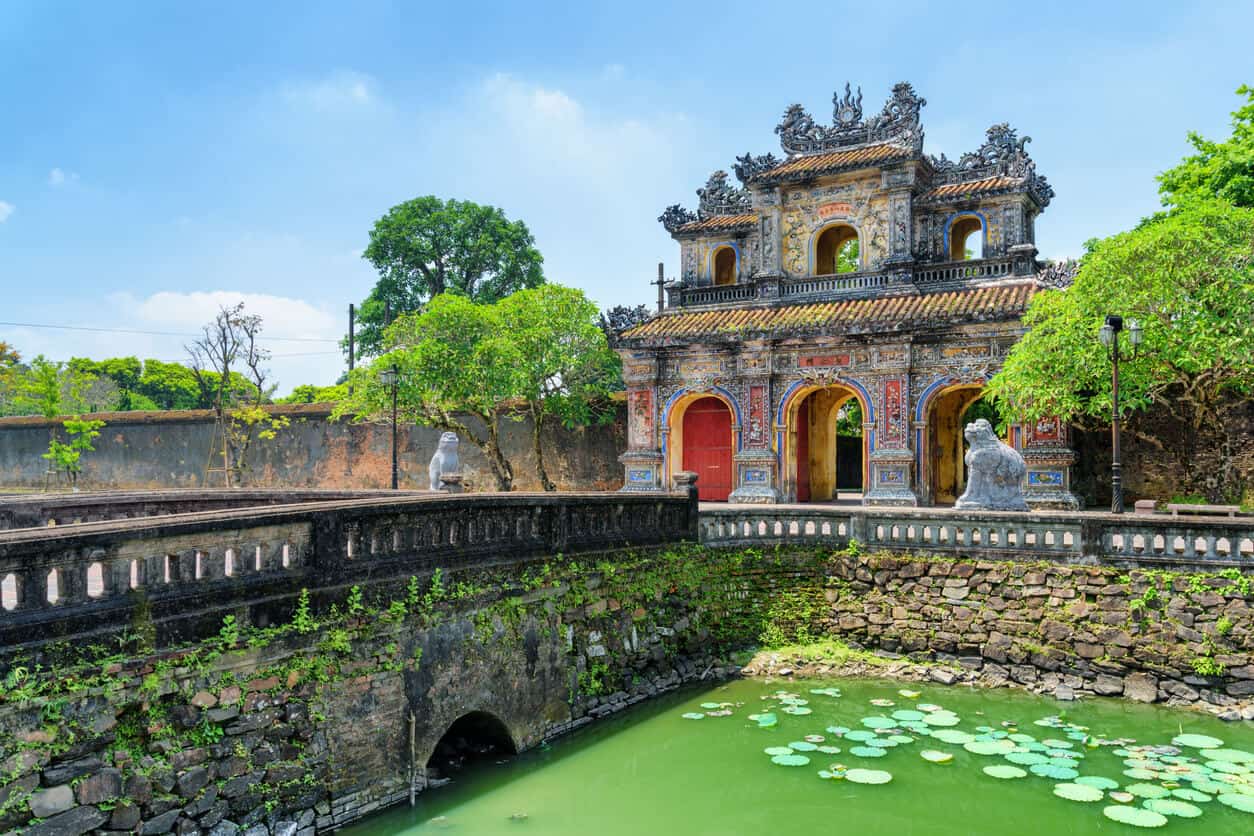
Finding Tours in Vietnam
My #1 tip for people finding tours in Vietnam is this: don’t use international booking sites like Tripadvisor. That kind of site will present you with activity options that are overpriced and largely inauthentic. This advice is especially applicable to Vietnam tours, because fake reviews are a fairly large problem in the Vietnamese travel industry.
Instead, look for tours from local operators who are still large enough to have an online presence. You’ll probably have to comb through a few Google results to find tour pages that fit that description, but it should only take a few minutes after searching for “[your destination] tours” to find several great non-corporate options.
The best Vietnam tours will have positive reviews from third parties with no obvious financial incentive to plug the tour. For example, it is a great sign if an international travel blog by someone who visited Vietnam reviews a tour positively. A positive testimonial for a tour on the site of the tour company is nice to see, but understand that it is quite possibly fake or at least coerced.
Exploring Vietnam Without A Tour
If you feel up to it, I’d recommend exploring Vietnam sans tour for at least part of your trip. You can start with a tour, and then when you are comfortable, travel on your own. This is a good option for countries like India, too, where a beginners tour can get you started. The beauty of the country and the extraordinarily friendly locals make it a great place to form memories even without a tour guide.
In my experience, Vietnam’s cities are easier to explore without a tour than any other cities in Southeast Asia. There are a few reasons for that, including:
- The easy-to-navigate transportation in cities, mentioned in a previous section.
- Google Maps works extremely well in Vietnam, locating addresses and landmarks in even semi-rural cities with a surprisingly high success rate.
- Tourist infrastructure is very well-developed in Vietnam around any landmark that attracts any interest from visitors.
- Businesses and attractions in Vietnamese cities are generally built close together, so you can do most of your self-guided exploration on foot.
Getting from city to city is easy, too, as I talked about in the transportation section.
Touring outside of the city is also easy compared to most countries in this part of the world thanks to Vietnam’s comprehensive highway system. That being said, it will be even easier (and will help you to get the most out of your self-guided exploration in Vietnam) if you rent a motorbike. More on that in the next section.
Finally, remember that Google Maps and Google Translate are your best friends when touring Vietnam solo. Very few people outside the cities speak English at any more than a rudimentary level, and rural attractions are further apart then they are in the cities. Again, though, the friendly locals and easy-to-navigate infrastructure mean that, with a little effort, you should be able to find all the best spots without much issue.
And check out this post for some ideas about getting Off the Beaten Track in Vietnam.
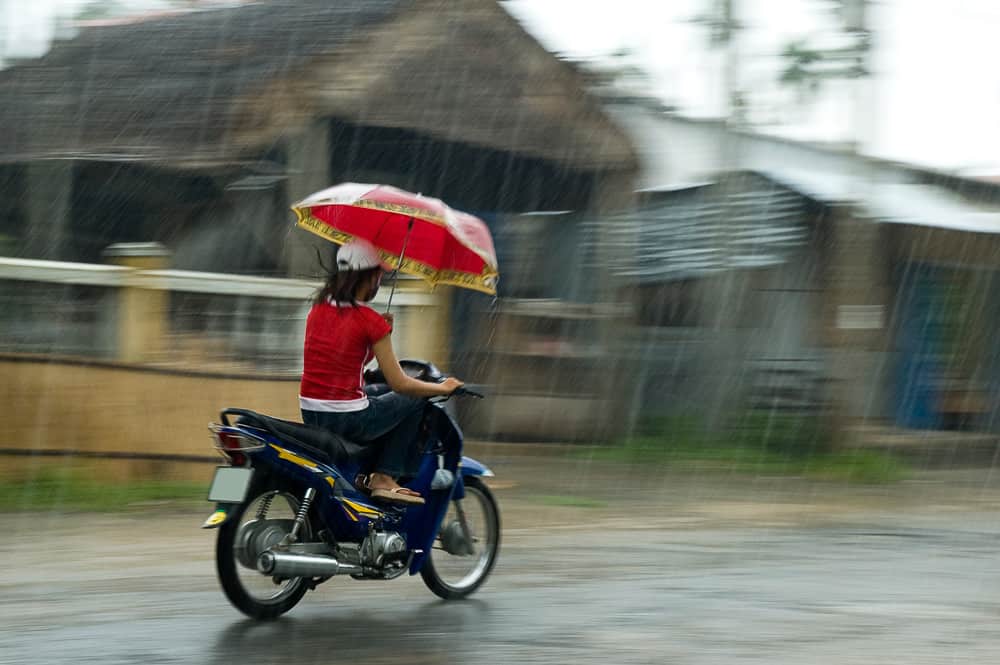
Driving a Motorbike in Vietnam
The idea of renting a motorbike intimidated me at first. Once I finally climbed on the back of one, however, I realized that it was similar to riding a heavy bicycle. Just a few minutes later, I was comfortable tooling around and then I spent time practicing before hitting the road. It helps if you have previous scooter or motorcycle experience.
Most motorbike rental agencies will let you rent without providing a license. To do everything legally, though, and to be covered by international travel insurance in the chance anything does happen to you on the road, you should secure an international driver’s license before leaving your country. The process for obtaining an international driver’s license for Vietnam is actually quite simple. And of course you should definitely have travel insurance.
Safety in Vietnam
Despite its war-torn history, Vietnam is actually a remarkably safe country, even for solo female travellers and families. Violent crime is essentially non-existent, even in the big cities like Ho Chi Minh City and Hanoi. You should still use common sense and keep from walking through dark alleys at 3 in the morning, fanning yourself with a stack of large bills, but rest assured that it’s safer than the vast majority of countries.
Petty crime like pickpocketing or theft is relatively rare, but definitely exists. Luckily, a bit of common sense can virtually guarantee you won’t be a victim. Follow these tips:
- Don’t take your phone out while out on the street unless it’s fastened around you – for example, by a neck strap. If using your phone without a strap, make sure to face away from the street.
- Keep your wallet in your front pocket or buy a zip-up money pouch to fasten around your wrist.
- Don’t display signs of wealth like fancy jewelry or clothing. Even if those “luxurious” items will not be stolen, looking wealthy makes you stand out as a prime target for any thieves that might see you.
Food safety in Vietnam should be more of a concern, although you can still avoid getting sick if you make an effort. Try to stick to eateries that either have a lot of customers or who you can watch as they prepare the food. Obviously, unsanitary food prep practices like taking money from customers and then touching food without using gloves or washing up are red flags.
My top 3 tips for food safety in Vietnam are:
- Avoid anywhere that does not have on-site refrigeration if they are selling perishable foods.
- Do not eat raw vegetables. Usually, anywhere that serves vegetables will boil them for you if you request rau chọn.
- When you are given free iced tea with a meal, request it without ice: không đá. Ice is sometimes made with unfiltered tap water. A tiny bit won’t hurt you, but it could make you sick if all the ice melts and you drink it.
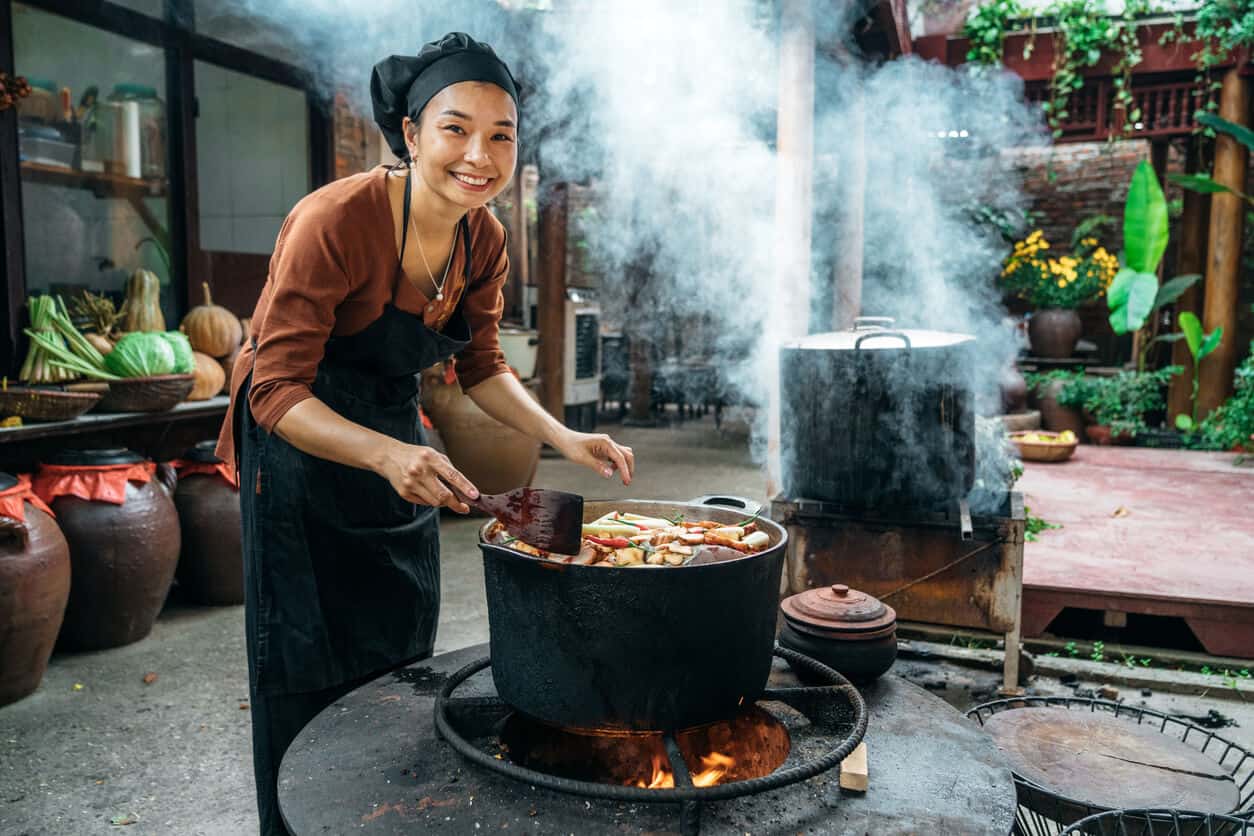
Getting a SIM Card in Vietnam
I usually recommend Google Fi to travelers since it is convenient. Google Fi works in Vietnam as well, but mobile plans are so cheap in Vietnam that I’d actually recommend using them instead if you’re staying for more than a week. For example, I get 4GB of data and 60 minutes of calling PER DAY for about 4 USD per month.
Getting a tourist SIM card is super-easy at any international airport in Vietnam. There will be more than a few vendors trying to sell you on SIM cards from the moment you pass through immigration. The best providers to choose are Mobifone and Viettel. Authorized shops for carriers will sell tourist SIMs, as well.
If you want to get a SIM that you can top up with data, go to a Vietnamese mobile carrier’s retail location (there are a lot of them all over major cities) and present your passport. The representatives at carrier locations usually speak at least some English, and they’ll help you get your SIM installed and get a plan on the SIM.
Do not buy a SIM card at a location apart from the airport of an official carrier location, as it could be a scam.
Avoiding Scams in Vietnam
Scams are the most common source for issues tourists experience while in Vietnam. Like petty crime, though, they can be avoided. A few of the most common Vietnam scams and my tips to avid them are listed below.
Taxi Scams
The Scam: A taxi or motorbike taxi drives you to your destination and attempts to charge you too much. They might even drive you a longer route so as to drive up the meter price.
The Solution: Use a ride-hailing app like Grab or Xanh SM to book rides like you would with Uber.
Overcharging
The Scam: A vendor charges you way too much for an item. Alternatively, you eat a meal without knowing the price first and then you’re charged too much for it.
The Solution: Only buy items that have price listed, such as clothing items at a market or meals.
Shoe Shining Scams
The Scam: A person on the street (usually in a park) tries to shine your shoes and then charges you a very high price.
The Solution: Just don’t let these people shine your shoes. They can be a bit pushy, but it’s okay to yell at them and even kick your foot away to get them to stop.
Photo Scams
The Scam: A street vendor will offer to pose for a photo and will then try and charge an exorbitant fee.
The Solution: Just say “no” to any fee you did not agree to pay in advance, especially if it is very high.
“Impostor” Businesses
The Scam: A low-quality business will give itself a name very similar to a popular and reputable business and will then provide bad service to the people it attracts. For example, “Mai Linh” is one of the only reputable taxi companies in Vietnam, but “Mai Lin” is a scammy company. This shady practice is especially common in Northern Vietnam.
The Solution: Pay close attention to the name and spelling of the businesses you patronize.
Why 2024 is the best time to visit Vietnam
For 30-40 years after the Vietnam war ended in 1975, the country was pretty undeveloped in terms of tourism. Extreme poverty ran rampant and the infrastructure in place was too bare-bones to facilitate a positive experience for travelers.
Tourism infrastructure began developing in earnest around 2010, however. We’re now at the point in time when the country is developed enough to provide an unforgettable journey but still not so developed as to lose its authentic culture or natural beauty. In short, traveling in Vietnam right now may be a once-in-history experience.
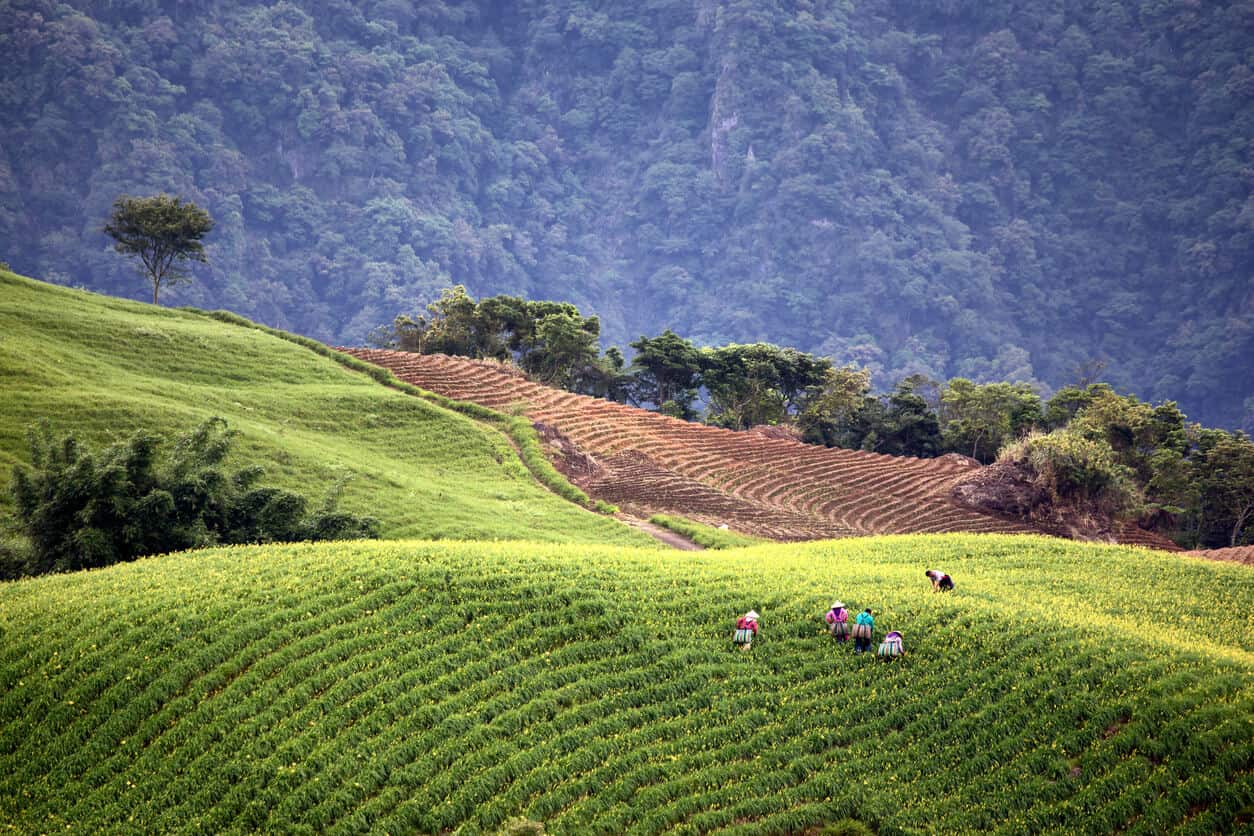
Vietnam for Beginners FAQs
Is traveling to Vietnam worth it?
Yes! Vietnam is my favorite country to visit in Southeast Asia, with a nice balance of developed tourist infrastructure and preservation of natural beauty. It’s also extremely cheap.
Where are the best places to visit in Vietnam?
Northern Vietnam has the most popular tourist destinations, including Hanoi, Sapa, Ninh Binh, Ha Long Bay, and Ha Giang.
Southern Vietnam may appeal more to those looking for tropical destinations and has tourist hotspots like Ho Chi Minh City, Vung Tau, Phu Quoc, Mui Ne, Da Lat, Nha Trang, and the Mekong Delta.
Central Vietnam is the most undiscovered part of the country and offers rugged beauty in spots like Da Nang, Hue, Hoi An, and Phong Nha.
Is Vietnam a good destination for solo female travellers?
Yes. Vietnam is safe in terms of violent crime and has a strong culture of respecting and empowering women. The locals are also friendly and usually eager to practice English, which makes Vietnam an even better destination for solo travelers looking to make local friends.
How much time do I need to travel in Vietnam?
That of course depends on how much ground you want to cover, but I would recommend spending at least a week in each region (North, Central, or South) that you plan to visit. If you’re pressed for time, a shorter package tour of the entire country is the way to go.
What should I eat in Vietnam?
Phở, bánh mì, and bánh xèo are tourist favorites that you’ll definitely encounter quickly. In my experience, Western tourists tend to love bún thịt nướng (vermecelli noodles with BBQ pork), bún chả (vermecelli and grilled meats in salty-sweet broth), and chả giò (fried spring rolls) as well.
The best way to discover new Vietnamese foods is to go on a local street food tour and ask them to show you foods most tourists have not heard about.
Read: Street foods of Vietnam you must try
How much does it cost to travel in Vietnam?
Traveling is super-cheap in Vietnam. Travel within cities can easily be accomplished for 50 USD per day including accommodation if you rely on self-guided tours. Travel between cities (more on that above) is cheap as well.
What’s the weather like in Vietnam? When’s the best time to visit?
Weather patterns differ throughout Vietnam and you should check a weather guide for the specific locations you plan to visit. In general, though, the best weather is:
- In Southern Vietnam, December through May.
- In Central Vietnam, February through August.
- In Northern Vietnam, March through April OR September through November.
Vietnam can also be a good monsoon travel destination.
Should I learn any Vietnamese before visiting Vietnam?
Preferably, yes. Locals will really appreciate it and may even give you better deals. That being said, Vietnam is easier for English-speakers to navigate without knowing the local language than almost any other country I’ve visited, as long as you stick to large cities.
How is healthcare in Vietnam?
Healthcare in Vietnam is not great, and the health facilities that admit tourists are also rather expensive. You’re better off taking care of healthcare needs before you leave for your trip. If you absolutely need medical services while on the trip, nearby countries Thailand and Singapore have world-class healthcare that outshines what Vietnam has to offer.
Where is the best place to start in Vietnam?
The best place to start is either Hanoi in the North or Ho Chi Minh City in the South. English is the most widespread in Hanoi, and Ho Chi Minh City is more culturally similar to a lot of Western Countries.
If you enjoyed this post, you can.
Sign up for Dispatches in the sidebar and follow Breathedreamgo on all social media platforms including Instagram, Facebook, Pinterest, and Twitter. Thank you!


